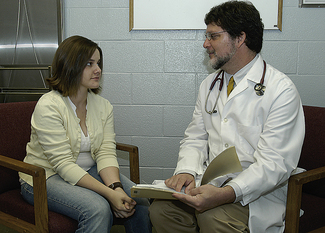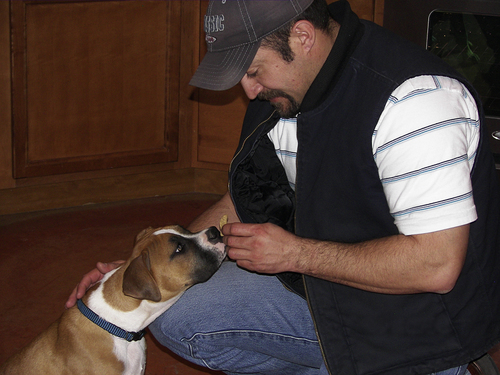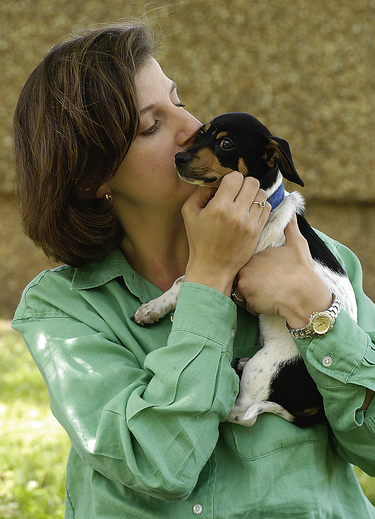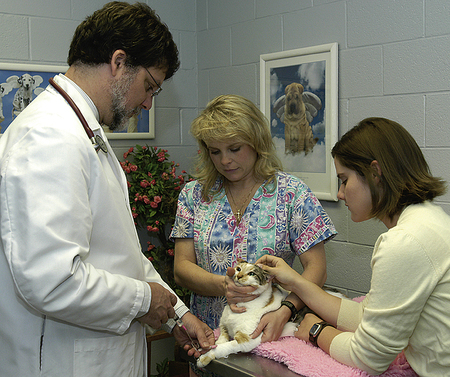CHAPTER 12

Interacting with a Grieving Client
Mastery of the content in this chapter will enable the reader to:
• Define the human-animal bond.
• Differentiate between quality and quantity of life.
• Identify the euthanasia process.
• List types of pet memorials that are available.
• Define the five stages of grief.
• Discuss client solutions to help cope with the loss.
• Explain euthanasia to children.
UNDERSTANDING THE HUMAN-ANIMAL BOND
The human-animal bond is an emotional bond that forms as a benefit to both humans and animals (Figure 12-1). Each party treats the other with mutual respect, trust, devotion, and love. To some clients, pets are their children; to others, pets are their best friends. Whichever connection has been developed, it is generally a long-lasting relationship (Figure 12-2).
THE EUTHANASIA PROCEDURE
When a client arrives at the clinic for euthanasia of a pet, every attempt should be made to get him or her into a quiet room as soon as possible. Many practices have separate rooms used only for this purpose. Team members need to remember that this is a very difficult time for a client, who may not understand everything that is explained. The euthanasia process should be explained again, including the options that exist for the body (many hospitals offer private cremations, mass cremations, or burial services at a local pet cemetery). The owner must sign the release form, and all charges should be taken care of at this point. Figure 2-10, H in Chapter 2 is an example of a euthanasia release form. Team members should ensure that the name the on the file matches the name on the euthanasia form.
The euthanasia procedure varies from hospital to hospital; however, the same general ideas apply overall. The pet may have a catheter placed intravenously so that the vein is easier to access while in the euthanasia room with the client. Some practices may give a tranquilizer that relaxes the pet. This also allows the owner to stay with the pet and “say goodbye” (Figure 12-3). When the owner is ready, a euthanasia solution is injected into the vein; most solutions are an overdose of a barbiturate. This causes the heart to stop beating and the respirations to cease. When the heart is no longer audible, the patient has died. Clients should be advised that pets may lose their bowels and urinate when the muscles relax. They should also understand that pets generally do not close their eyes when they die and that this is normal.
Stay updated, free articles. Join our Telegram channel

Full access? Get Clinical Tree




 PRACTICE POINT
PRACTICE POINT PRACTICE POINT
PRACTICE POINT PRACTICE POINT
PRACTICE POINT
